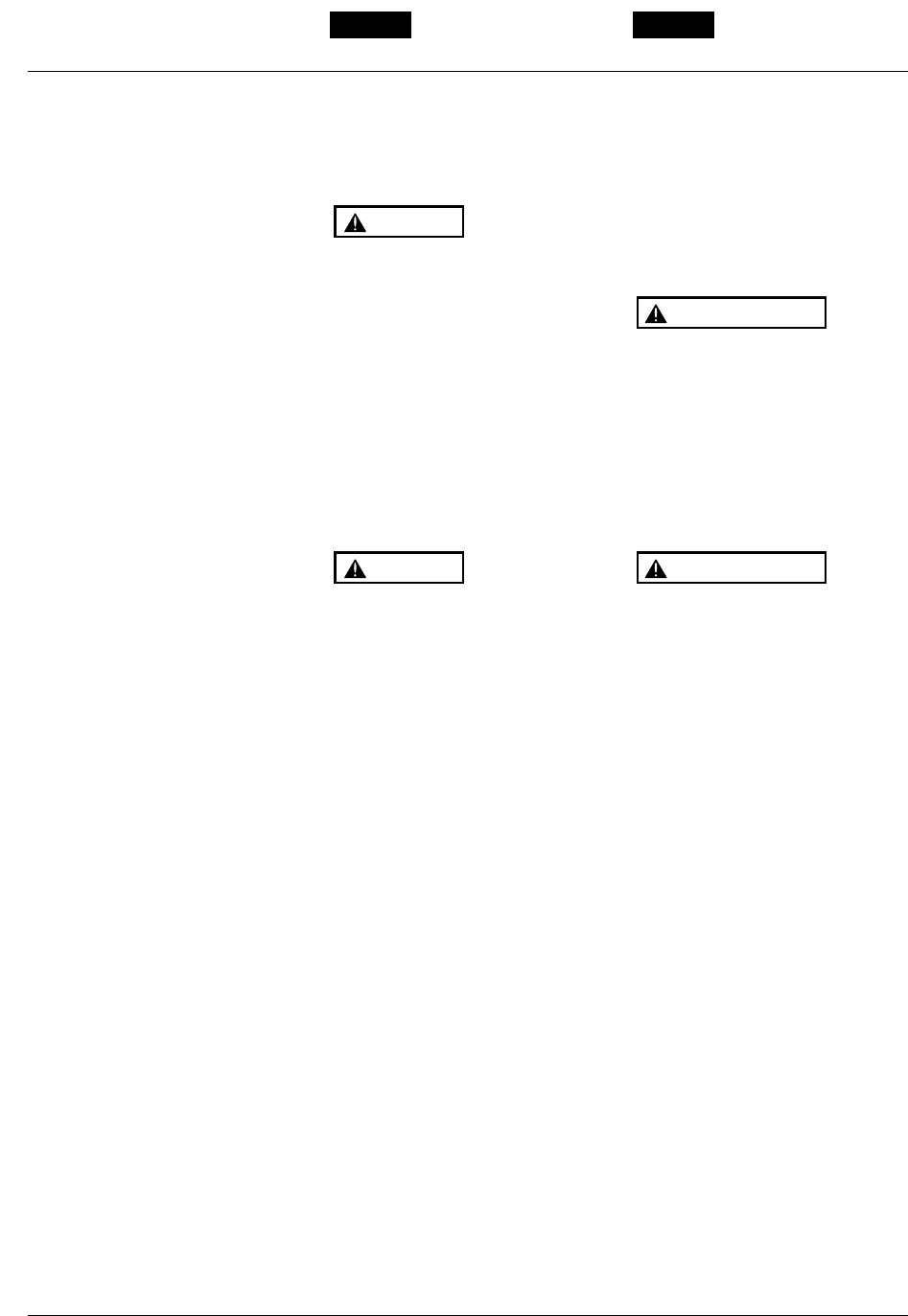
English Français
8. Operation 8. Fonctionnement
40
(d)The blade may be seized by weeds if
the engine speed is too low, or the
blade cuts too deep into weeds. Adjust
the engine speed and cutting depth
according to the condition of object.
• If the grass or other object gets caught
in the blade, or if the unit starts to shake
or vibrate, turn off the engine and check
the whole unit. Change the blade if it
has been damaged.
• Turn off the engine and make sure the
blade has completely stop before
checking the blade, and removing any
object got caught in.
■ CONTROLLING BLADE BOUNCE
• Kick out can cause serious personal
injury. Carefully study this section. It
is important that you understand what
causes kick out, how you can reduce
the chance of kick out and how you can
remain in control of the unit if kick out
does occur.
1. What causes kick out:
• Kick out can occur when the moving
blade contacts an object that it cannot
cut. This contact causes the blade to
stop for an instant and then suddenly
move or ”bounce” away from the object
that was hit. The operator can lose
control of the unit and the blade can
cause serious personal injury to the
operator or any person nearby if the
blade contacts any part of the body.
2. How you can reduce the chance of
kick out:
a. Recognize that kick out can happen.
By understanding and knowing about
bounce, you can help eliminate the
element of surprise.
b. Cut fibrous weeds and grass only.
Do not let the blade contact materials
it cannot cut such as hard, woody
vines and brush or rocks, fences,
metal, etc
c. Be extra prepared for bounce if you
must cut where you cannot see the
blade making contact such as in
areas of dense growth.
d. Keep the blade sharp. A dull blade
increase the chance of bounce.
e. Avoid feeding the blade too rapidly.
WARNING
WARNING
largeur, commencer le travail par la
gauche pour ne pas être gêné par
l’herbe déjà coupée.
(d)La lame peut être bloquée par l’herbe
si la vitesse du moteur est trop lente ou
si elle est enfoncée trop profondément
et rapidement dans l’herbe. Régler la
vitesse du moteur et l’engagement de
la lame en fonction du travail à
effectuer.
• Si de l’herbe ou tout autre objet se
coince dans la lame ou si la machine se
met à vibrer, arrêter aussitôt le moteur
et vérifier la débroussailleuse. Changer
la lame si elle est endommagée.
• Arrêter le moteur et attendre que la
lame soit complètement à l’arrêt avant
de la vérifier et d’enlever le moindre
objet coincé.
■ CONTROLE DES COUPS DE RECUL
• Les coups de recul peuvent causer de
sérieuses blessures. Etudier
attentivement cette section. Il est
important de comprendre la cause des
coups de recul, de savoir comment
réduire leur éventualité et de conserver
le contrôle de la machine dans ces
circonstances.
1. Cause des coups de recul :
• Les coups de recul se produisent
lorsque la lame rencontre un objet
qu’elle ne peut couper. Ce genre de
contact arrête la lame pendant un
instant puis rebondit soudainement en
se libérant de l’objet du contact.
L’opérateur peut perdre le contrôle de
la machine, se blesser ou blesser une
personne à proximité si la lame les
atteint.
2. Comment réduire l’éventualité des
coups de recul:
a. Reconnaître que les coups de recul
peuvent se produire. En comprenant
et en connaissant le rebond, on peut
éliminer l’élément de surprise.
b. Ne couper que des plantes
fibreuses ou de l’herbe. Ne pas
laisser la lame entrer en contact avec
des matières qu’elle ne peut couper,
telles que les tiges de bois dur, les
pierres, clôtures, pièces métalliques,
etc.
c. Etre prêt à recevoir un coup de recul
dans les endroits denses où la lame
disparaît dans la végétation.
AVERTISSEMENT
AVERTISSEMENT


















